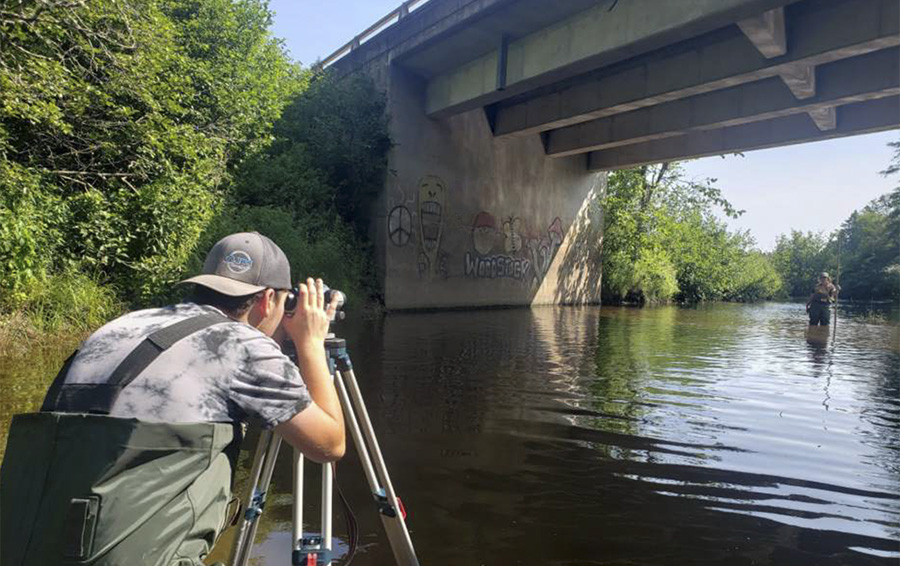Featured Projects
Belleisle Watershed Coalition Inc. / New Brunswick / 2023
Assessing barriers & restoring access to fish passage in the Belleisle watershed

Over the years, observers have reported seeing some fish getting stuck in pools and being unable to move past culverts in the upper parts of the Belleisle watershed in southern New Brunswick. At the same time, in the lower parts of the watershed, there was also a need to examine and assess potential barriers and to detail whether they were impacting fish movement. As such, the Belleisle Watershed Coalition (BWC) moved forward in 2023 with two simultaneous projects.
“This is the second year for the barrier assessment part of the project,” said Colin Forsythe, executive director of the BWC. “I had noticed that the watershed had never in its history actually assessed any of the culverts anywhere in the watershed as barriers to fish passage. It’s simply not been looked at. It seemed like a big gaping hole in our knowledge.”
A barrier assessment was carried out successfully close to 300 kilometers of brooks and streams in the upper parts of the watershed in 2022, which identified 50 kilometres of Belleisle Creek and tributaries which had barriers on them. An assessment of the lower parts of the watershed was conducted this year.
“Some of the barriers, particularly ones where there’s debris in the culverts that is providing the barrier, we’re trying to get permission from the New Brunswick Department of Transportation and Infrastructure (DTI) to go in and clean those culverts out and start to restore the fish passage,” said Forsythe. “That’s the impetus of the project – to improve the habitat, particularly for salmon. It’s over the long run in Belleisle because nothing has ever been done like this in quite a few culverts in the watershed and it’s long past time to start tackling them.”
The BWC applied to the ASCF and was awarded a grant of $10,000 for 2023, and also received funding support from the New Brunswick Wildlife Trust Fund and the New Brunswick Environmental Trust Fund. The assessment project is still ongoing and expected to be completed by the end of September. Watercourse mapping is used to generate GPS coordinates and then students working with the BWC are trained on how to utilize the group’s rapid assessment procedures for culverts, bridges and beaver dams.
Work on restoring access in the upper parts of the watershed has been somewhat delayed by heavy rainfalls and coordination with DTI, but Forsythe hopes that they will be able to start tackling their first eight sites in August and September.
In addition to the assessment and restoration activities, the BWC’s 2023 efforts also included identifying stakeholders interested in this issue and conducting educational outreach to raise awareness. To that end, the BWC formed partnerships with the Hammond River Angling Association, the Petitcodiac Watershed Alliance, and formed an educational partnership with the Boys and Girls Club, which offers a summer camp where students can learn more about the watershed and its challenges.
Looking forward, the BWC will likely look at conducting more in depth fish monitoring in the watershed. Assessing access is extremely useful information to have, but pairing it with data on the actual health of fish populations in the watershed will be invaluable.
“It’s promising,” said Forsythe. “We see promising things, but we really need concrete data to nail down how these populations are doing. And how will they trend over time? They’ll certainly trend better over time if they have access to more habitat.”
